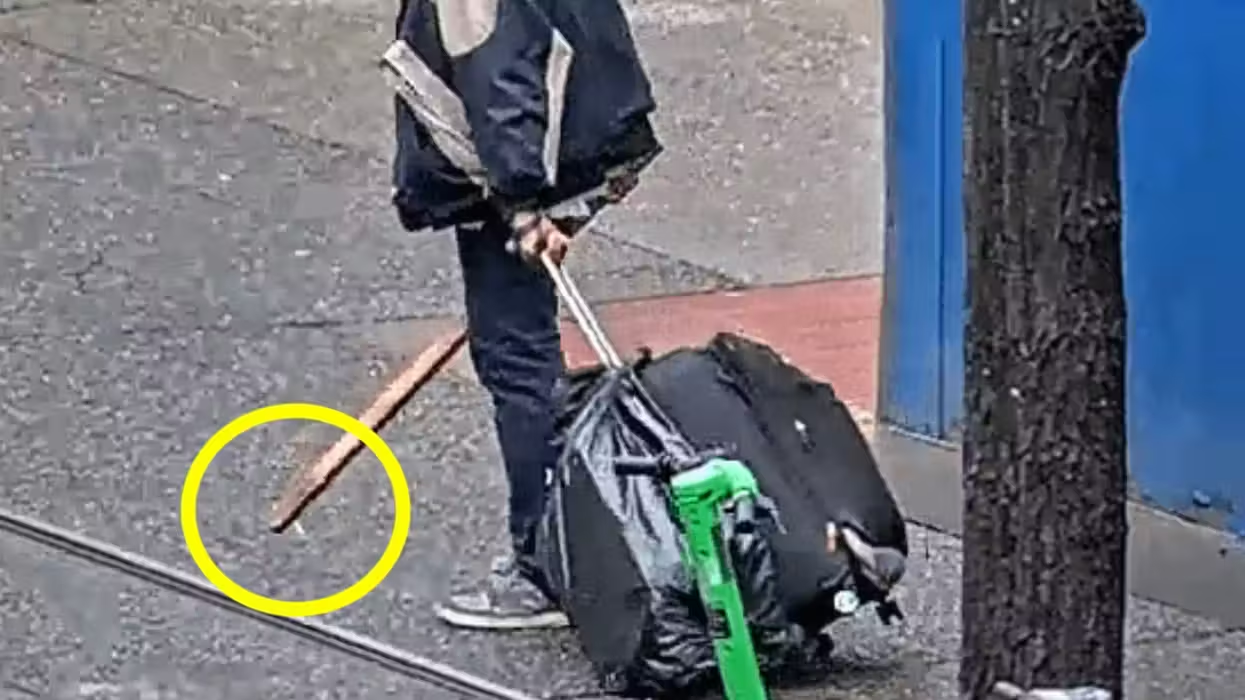
© 2025 Blaze Media LLC. All rights reserved.
Did Historians Find Evidence for Lost da Vinci Mural Behind Another Piece of Art?
March 13, 2012
"one of the most famous discoveries of a century."
The 16th century mural by Giorgio Vasari is priceless, but researchers were excited to drill a hole through the "Battle of Marciano" in Florence's Hall of 500. Why would art historians be willing to risk what some have said would damage the invaluable piece? They believed they were going to find evidence of a lost painting from another famed artist: Leonardo da Vinci.
National Geographic reports that the researchers think they have found the first convincing evidence to da Vinci's "The Battle of Anghiari", which he was said to have used a novel painting technique on that didn't pan out. Sending an endoscope through the Vasari, the team, led by Maurizio Seracini, an art diagnostician at the University of California-San Diego who is also a National Geographic Society fellow, found a black pigment and lacquer, which they believe could be da Vinci's work originally commissioned by Italian statesman Piero Soderini in 1502.

National Geographic has more background on the lore surrounding the lost da Vinci mural:
In the 1550s Vasari was hired to remodel the Hall of 500—named after the 500 members of the Republic of Florence's Grand Council—and paint several enormous murals, each dozens of feet high.One mural was to be painted over Leonardo's unfinished work, but at least one tale describes Vasari as a Leonardo admirer who couldn't bring himself to destroy the work.
Watch the National Geographic preview of the search:
Seracini, who searched for clues for the mural for 36 years, is "convinced it's there." National Geographic reports that Seracini's first clue was quite obvious as to what he should do next:
Seracini climbed a scaffold in front of Vasari's painting and spied two words inscribed in a flag: "cerca trova," which translates to "seek and you shall find." Seracini took it as a cryptic cue that Vasari had built a false wall in front of the Leonardo.

From there Seracini and his team took a scan of the wall, which revealed a hollow space between the mural and the solid wall it should have rested on. The team then sought permission to drill 14 small holes through the Vasari. Naturally, political outcry ensued. Still, Seracini believed these sort of holes could be repaired "invisibly."
The team moved forward with the drilling in 2011, under the condition they could only go through existing cracks in the mural. One hole close to the gap shown by the scan yielded grit that an X-ray showed to be black pigment:
Based on the x-ray data, Seracini thinks the black pigments are similar to those found in brown glazes of Leonardo's "Mona Lisa" and "St. John the Baptist."Red flakes also pulled from inside the wall could be lacquer—something that wouldn't be present on a normal plaster wall.


Even with this discovery, which National Geographic reports Seracini saying was "encouraging," the group only had a week to work on the mural and it wasn't quite enough time to prove there is real paint behind it.
National Geographic goes on to note experts as saying that while it is quite a leap to assume a da Vinci was found, they acknowledge there is definitely something behind the Vasari:
"There doesn't seem to be enough details out there yet, but based on what has been shared so far, I believe there is a painting. They found paint and they found brushstrokes," [said Peter Siddons, a physicist at Brookhaven National Laboratory who has verified famous works of art using particle accelerator technology]."To jump and say it's a Leonardo da Vinci? That's another question.
"Still, someone took the trouble to build this false wall" he said. "I certainly think that's intriguing."
Others have said that the wall behind the Varasi could have been originally painted just for decoration, not necessarily as a piece of artwork.

For now, National Geographic reports that further probing of the wall is put off until the various parties agree on if and how to move forward. If a da Vinci were discovered behind the Vasari painting, according to National Geographic, Oxford art historian Martin Kemp said it would be "one of the most famous discoveries of a century."
[H/T Daily Mail]
Want to leave a tip?
We answer to you. Help keep our content free of advertisers and big tech censorship by leaving a tip today.
Want to join the conversation?
Already a subscriber?
more stories
Sign up for the Blaze newsletter
By signing up, you agree to our Privacy Policy and Terms of Use, and agree to receive content that may sometimes include advertisements. You may opt out at any time.
Related Content
© 2025 Blaze Media LLC. All rights reserved.
Get the stories that matter most delivered directly to your inbox.
By signing up, you agree to our Privacy Policy and Terms of Use, and agree to receive content that may sometimes include advertisements. You may opt out at any time.






